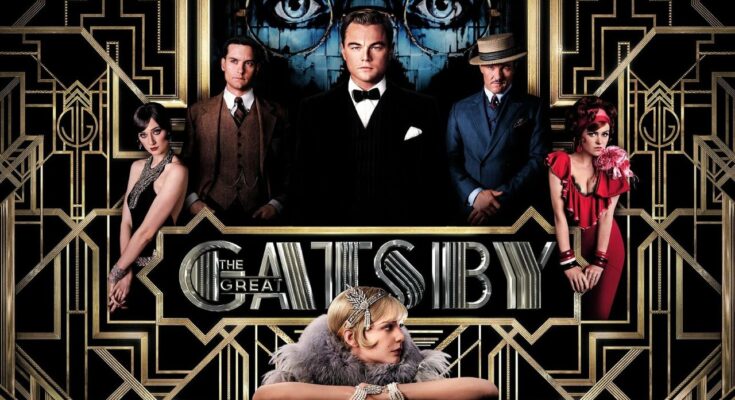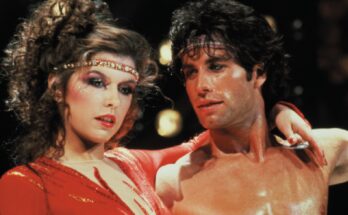The Great Gatsby (2013)
The Great Gatsby (2013), directed by Baz Luhrmann and based on F. Scott Fitzgerald’s 1925 literary masterpiece, is a lavish and emotionally charged adaptation that captures the glittering excess and moral decay of the Roaring Twenties. Starring Leonardo DiCaprio as the mysterious millionaire Jay Gatsby, Tobey Maguire as narrator Nick Carraway, and Carey Mulligan as the beautiful yet conflicted Daisy Buchanan, the film explores themes of love, wealth, illusion, and the American Dream.
The story unfolds in 1922, as World War I veteran and aspiring writer Nick Carraway moves to Long Island to work as a bond salesman. He rents a modest cottage in the wealthy enclave of West Egg, directly next to the extravagant mansion of the elusive Jay Gatsby. Every weekend, Gatsby throws dazzling parties filled with jazz music, champagne, and hundreds of glamorous guests — yet no one seems to truly know who he is.

Intrigued by his neighbor, Nick becomes drawn into Gatsby’s world of opulence and mystery. Through his cousin Daisy Buchanan, who lives across the bay in East Egg with her wealthy but unfaithful husband Tom Buchanan (Joel Edgerton), Nick learns that Gatsby and Daisy share a romantic past. Before the war, Gatsby was a poor soldier deeply in love with Daisy, but she married Tom for his wealth and status. Since then, Gatsby has spent years building his fortune — through questionable means — all to win her back.
When Nick arranges a reunion between Gatsby and Daisy, their old love reignites. Gatsby’s dream seems within reach: he believes he can recreate the past and reclaim Daisy entirely. He shows her his mansion, his endless possessions, and his idealized version of their future together. However, Daisy is torn between her emotions for Gatsby and her dependence on Tom’s power and security.

Tensions reach their breaking point during a sweltering afternoon in a New York City hotel. Tom confronts Gatsby, exposing his criminal connections and declaring that Daisy will never leave him. Shattered, Gatsby clings to the hope that Daisy will call him later that night. But tragedy soon strikes: Daisy, driving Gatsby’s car, accidentally hits and kills Myrtle Wilson, Tom’s mistress. Tom allows Myrtle’s husband to believe Gatsby was the driver, leading to a devastating conclusion — Myrtle’s husband murders Gatsby before taking his own life.
After Gatsby’s death, Daisy and Tom quietly leave town, abandoning all responsibility. Nick, disillusioned by the moral emptiness of the wealthy elite, arranges Gatsby’s lonely funeral and returns to the Midwest, haunted by the corruption and broken dreams he witnessed.
The film closes with Nick reflecting on Gatsby’s enduring faith in dreams — his belief in a future brighter than the present. The famous closing line resonates:
“So we beat on, boats against the current, borne back ceaselessly into the past.”
The Great Gatsby (2013) dazzles with its lavish visuals, modern soundtrack, and emotional depth. Beyond its glittering surface, it’s a timeless cautionary tale about obsession, illusion, and the unreachable promise of the American Dream — where hope shines bright, even as it fades into tragedy.



